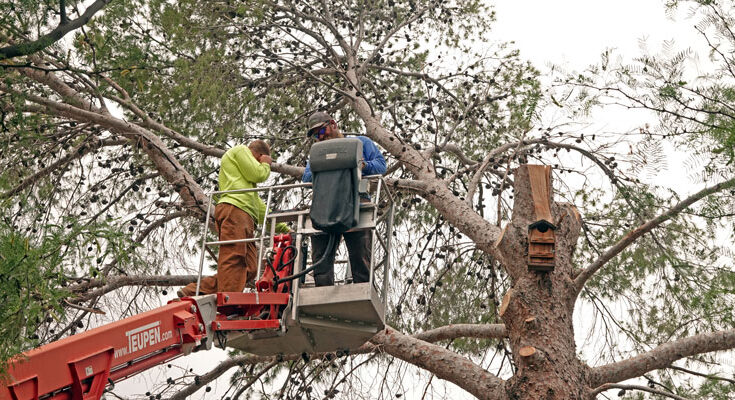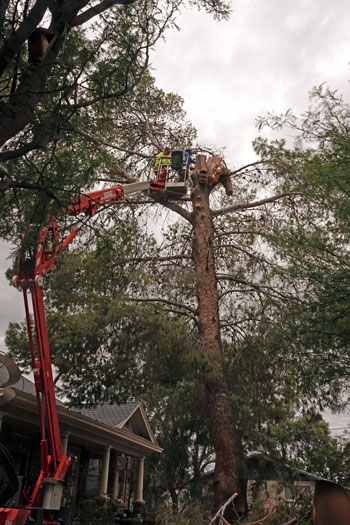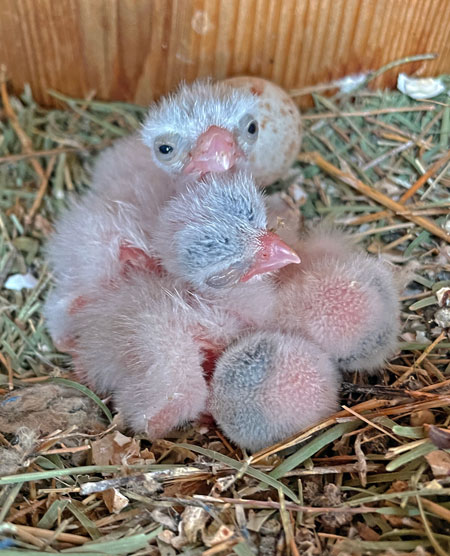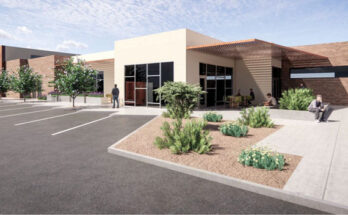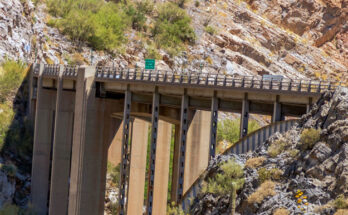Photo By Diane Drobka: A microburst tore through the Pima area on Thursday, June 20 causing a massive amount of destruction. In its wake, one family rejoiced in seeing life continue in nature through the chaos as baby falcons were discovered in a nesting box.
By Diane Drobka
PIMA – There is a happy story to share that was a result of our nasty Pima microburst last Thursday, and we have photos and a video to help tell the tale.
The intense winds snapped the top off of our big pine in our front yard across from the Pima fire station. There were very high branches that needed to be removed by a professional so I called Curtis Landscaping.
Jay Curtis and a crew of three came over on Monday morning. He went up in their boom-lift cherry picker to cut off all the broken-yet-attached branches. The whole time Jay was using the chainsaw, two American kestrels (small falcons) were flying nearby and calling very loudly. They were even landing in the branches above him.
We thought this was really strange because we’ve only seen them nesting in our neighbor Julio’s palm tree each year. They had never shown any interest in the nest box that my husband Craig (Wilcox) had installed about 10 years ago when he was equipped for tree climbing as part of his forestry job.
Eventually, Jay got to the point where he needed to remove the nest box to cut right above it. He brought it down to us and I was going to clean it out as we had seen house sparrows going into it long ago.
I immediately opened the front of the box (at 11 a.m.) and, to my surprise and delight, there were four newly hatched American kestrel chicks inside plus one egg that had not yet hatched! They may have hatched during or after the storm – and then they got to hear a loud chainsaw working nearby. What a traumatic way to begin life. I snapped a few quick iPhone photos and a short video and closed the box to avoid increasing their stress.
We told Jay that he would have to go back up again and reattach the nest box. Craig found a cinch strap that could be wrapped around the nest box and tightened. Jay was able to hang it about 8-10 feet below where it originally was. By 11:30 a.m., it was hanging and we crossed our fingers and hoped that the parents would accept the disturbance and new location.
They did not waste any time! Within just four minutes, both were on branches far above the box. A minute later, the female was on a much closer branch, and at 11:38 a.m., she flew down to the opening. She glanced inside, looked at me sitting on the ground snapping photos, and hopped into the hole at 11:39 a.m. Less than 10 minutes between the time it was rehung and the time she entered was even better than we could have imagined. Jay and his crew hadn’t even driven away yet.
We’ve seen more activity around the nest box including the female with her head poking out and also arriving with a lizard. Now we have about 30 days before the young can leave the nest box. This will occur over several days and the young birds will depend on their parents for food for two to three weeks after they fledge. During this time, they may return to the nest box to roost and remain close to their siblings. We are looking forward to watching the rest of their story.


